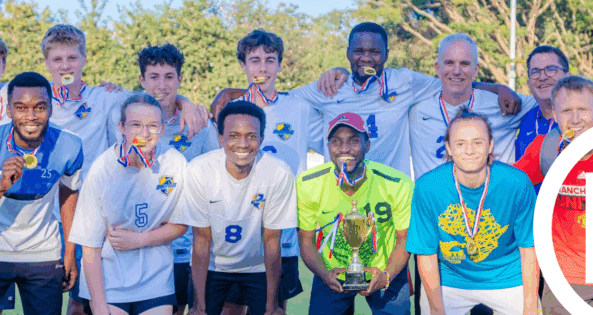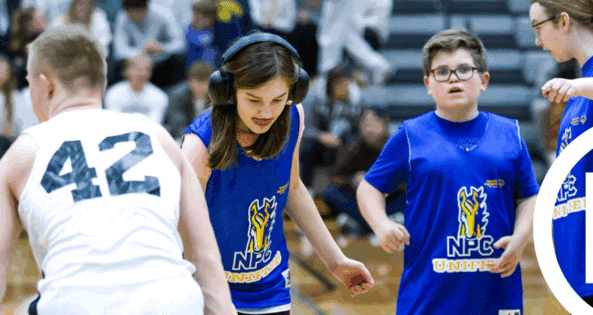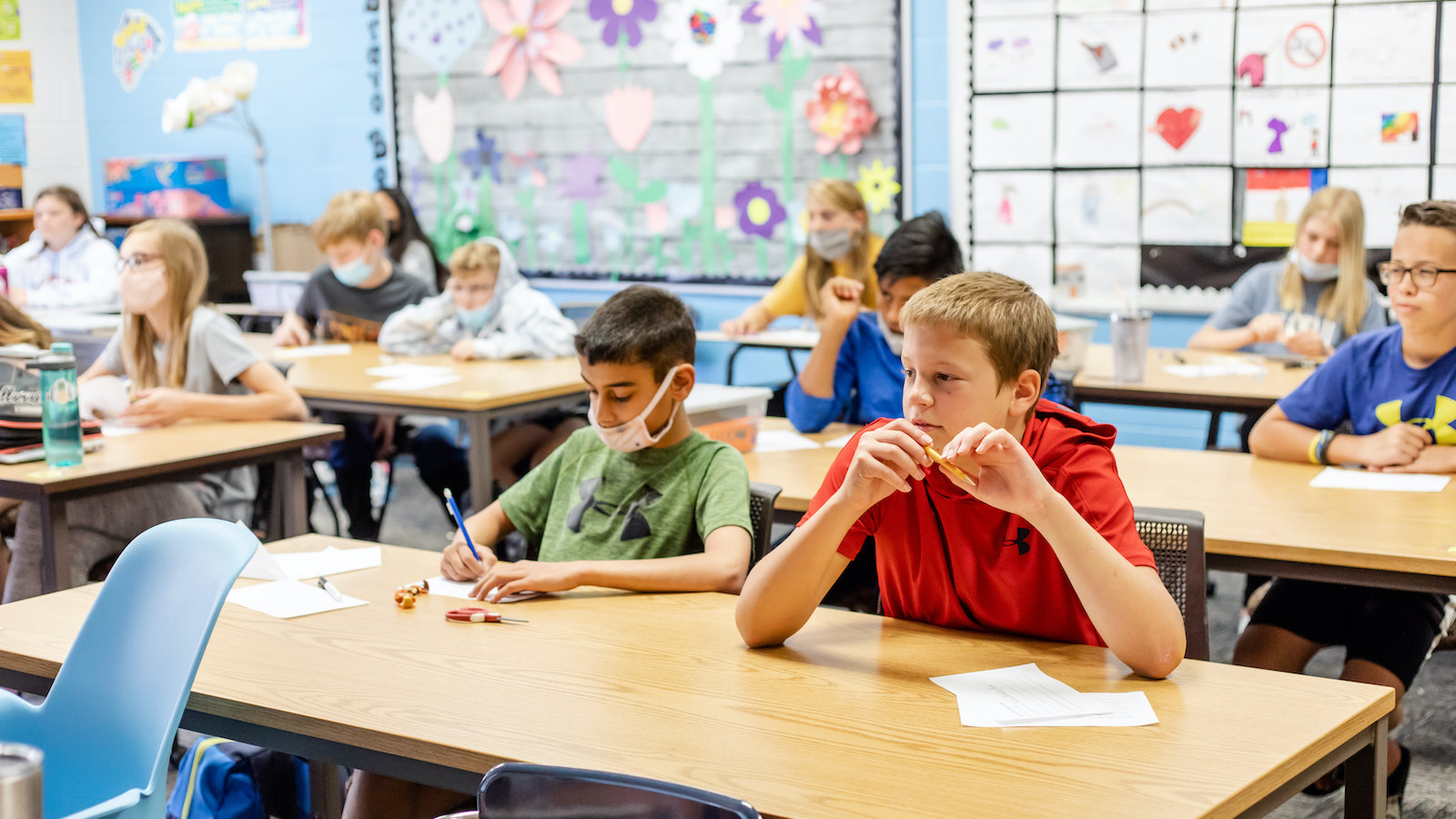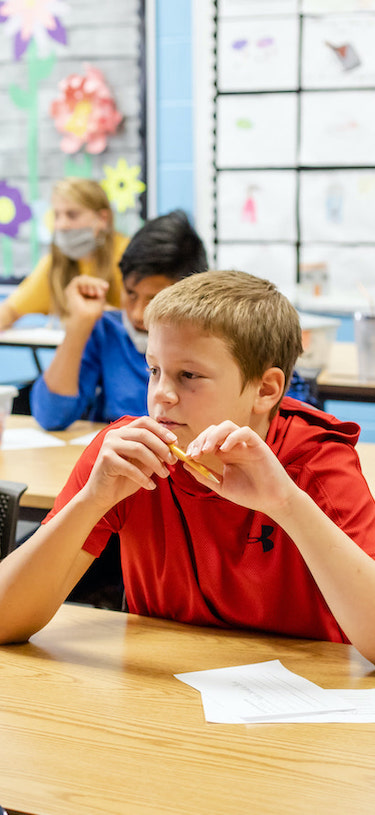Blog
A Glimpse into Mental Health Care at NPC
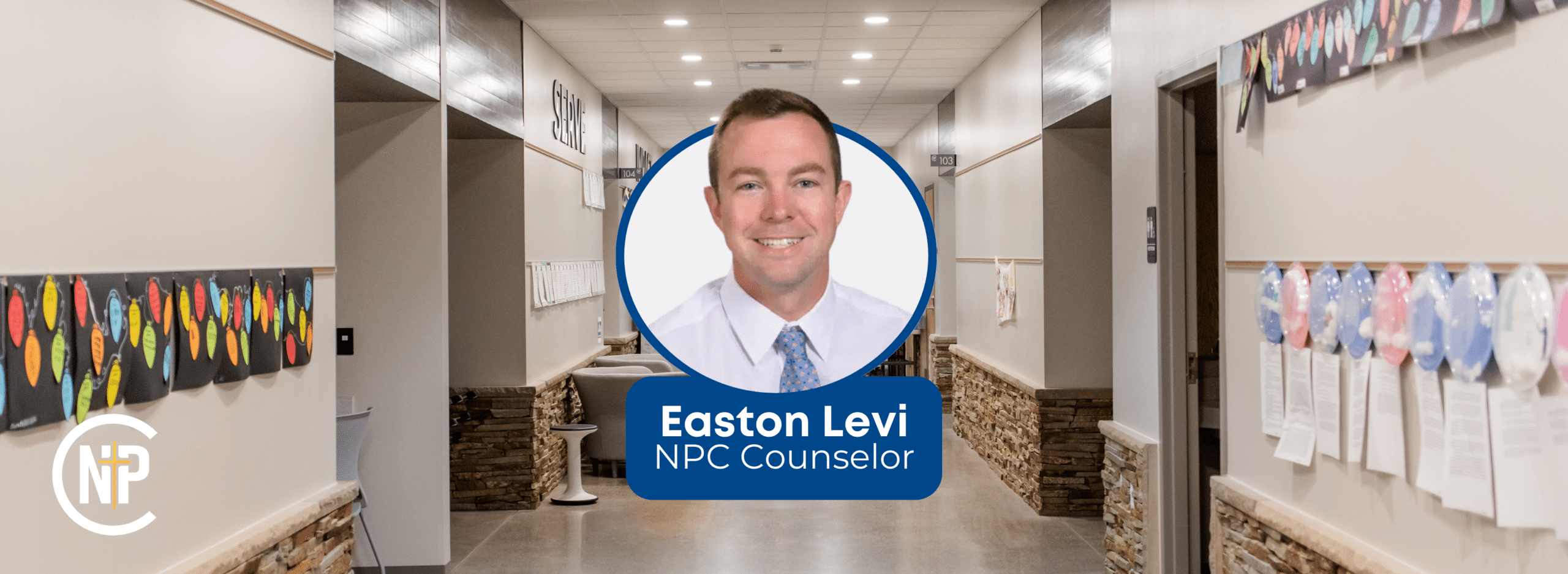
May is Mental Health Awareness Month. Here at NorthPointe Christian, we strive to educate and care for the whole person, care that extends beyond academics into mental and emotional health support. We recently sat down with Easton Levi, our Elementary and Middle School Counselor, who shared more about the instrumental role he plays in caring for the mental and emotional health of our students. Keep reading to learn more about Easton’s work and his love for NPC!
What does an average day look like as NPC’s elementary and middle school counselor?
Each day of work at NPC looks a bit different for Easton, but his core goal is the same: holistically approach each student’s care, be a vessel of Christ’s love to each student, and ensure each student feels seen in their struggles.
Easton supports a variety of needs and concerns. Some students struggle with anxiety or behavioral concerns, while others are grieving a loss or struggling to cope with change. Easton meets with students to help equip them with the tools they need to manage their emotions, separate their thoughts from their feelings, and maintain healthy social relationships. He helps students develop skills in coping, conflict resolution, healthy living, organization, routines, and so much more, with the goal of helping them manage their emotions and productively learn in the classroom. Learning can be very challenging for students who are carrying around heavy emotions.
In addition, Easton teaches one social-emotional learning (SEL) lesson for 30 minutes in each elementary classroom each month. During these lessons, Easton instructs students on social skills and emotional regulation, particularly how to identify their feelings and articulate their thoughts. The goal of these social-emotional learning lessons is to aid students in communicating their feelings, listening to others, and creating a caring learning environment that honors God.
Easton has been able to develop trusting relationships with our NorthPointe students – they know that he cares about them and their needs.
How do you, teachers and parents work together to identify and help a struggling student?
According to Easton, there are three main ways a student is scheduled to meet with him: teacher referral, parent contact, or student contact.
In the majority of cases, a teacher notices a particular behavioral or emotional pattern a student exhibits and has a conversation with the student’s parent(s) about that observed pattern. If the teacher and parents come to consensus about the observed behavioral or emotional patterns, they bring in Easton to confirm the student could benefit from his support.
In other cases, a student approaches Easton directly and asks to talk to him about a particular struggle they’re walking through. After a few years at NorthPointe, students are accustomed to Easton’s presence in the school and their classroom, and understand his role as a counselor. In these situations, Easton contacts the parents to confirm permission to meet with their student and gladly meets with them.
Support varies from weekly, biweekly, monthly, or on an as-needed basis. Input from teachers and administrators helps Easton confirm that the duration of services will appropriately address the needs of the student. After meeting with a student, Easton consistently communicates with parents to share the details of the student conversation. As a student receives care and improvements are being made, Easton re-assesses the student’s treatment plan and makes adjustments as necessary. This collaborative process between Easton, teachers, administrators and parents ensures that students receive the care they need.
How do you, if at all, partner with external practitioners in a student’s care?
At times, the needs of a student extend beyond the capacity of an in-school counselor and requires a treatment plan from an outside clinician. In those situations, Easton helps parents outsource their student’s care from a list of recommended clinical counselors. In some cases, Easton collaborates with a student’s external clinician to share treatment plans, goals, and other information that will help both of them effectively care for a student in their specific settings.
In your work, what common social issues do you help students address?
In addition to providing counseling support for anxiety, depression, behavioral goals, and other concerns, Easton’s work also focuses on aiding students in developing healthy social interactions and peer relationships, displaying the love of Christ both to teachers and peers. During Easton’s monthly social-emotional learning (SEL) lessons in classrooms, he emphasizes the importance of checking in with classmates, including others, and offering to pray for them. Easton reminds students that checking in and including others can happen in little interactions and moments, such as inviting a classmate to play with them at recess or sitting with a different classmate on the bus. In addition, Easton encourages students to not allow technology to cause them to neglect their relationships. A child’s relationship with technology progresses from curiosity to interest to passion to identity, and once technology becomes the child’s identity, it makes healthy social interactions and peer relationships more difficult. Over time, Easton has seen tremendous progress in students as he observes their social interactions and witnesses the ways they reach out to their teachers and peers.
How can NPC parents, students and staff act to end the stigma surrounding mental health?
Mental health awareness and care has risen to new levels of conversation and action across the United States over the past few years. However, some students and parents still are nervous about the idea of receiving mental health care. We asked Easton for his advice regarding this stigma children and parents walk through. His best advice? Consider the whole person.
When parents consider their child as a whole person, they not only need to think about the visible problems their child struggles with, but also internal problems. If a child breaks their arm while playing outside, the injury is visible and demands attention from a medical professional. There’s no shame in seeking medical attention for a broken arm! If a child is struggling with grief or coping with a difficult life change, the struggle is internal and invisible. Similarly, there is no shame in taking a child to a counselor to help address that problem!
As people made in God’s image, we were made for community, and children are no exception. Everyone, children included, need people to listen to them, help them, and be present in their struggles.
There is absolutely no shame in seeking counseling services for a child, just as there’s no shame in seeking out a doctor for a medical problem. If a parent is nervous about the counseling experience, Easton encourages them to talk to a fellow parent whose child has received counseling, or call a local counselor to understand how the process works – hearing firsthand experience and gaining practical knowledge can help remove uncertainty.
Ultimately, the stigma surrounding mental health care is decreasing, but progress still needs to be made. Consider the whole child and the holistic needs they present, whether for a broken arm or a hurting mind. God made each person in His image, and graciously gives us doctors and counselors who can be present and listen during our times of struggle.
What is your favorite part about working at NPC? Why?
At NorthPointe, we are a close-knit community that deeply cares about each other. We call each other by name and have each other’s backs, regardless of position or title. Each teacher and staff member here celebrates the privilege they have to love students and teach them about the Lord, and desires to be a faithful steward of their work. Outside of the school day, the NPC staff loves to be together and spend time together – we are really like a family.
What’s a fun fact about you that most people wouldn’t expect?
I love boxing – both participating and watching!
